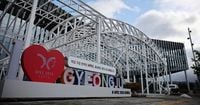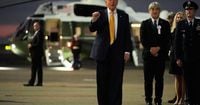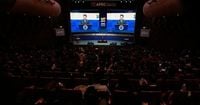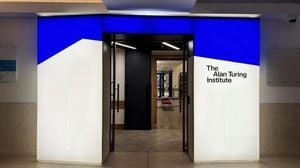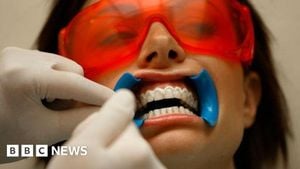In the historic city of Gyeongju, South Korea, a confluence of global politics and cutting-edge technology is unfolding, placing the country at the center of international attention. As world leaders gather for the Asia-Pacific Economic Cooperation (APEC) summit, South Korea’s newly elected president, Lee Jae Myung, is thrust into the diplomatic spotlight, orchestrating high-stakes meetings and navigating fraught relationships among some of the world’s most powerful nations.
This year’s APEC summit, the first hosted by South Korea in two decades, opens on Friday, October 31, 2025. According to the Associated Press, President Lee will welcome leaders from 20 countries, including U.S. President Donald Trump, Chinese President Xi Jinping, and Japan’s new Prime Minister Sanae Takaichi. The summit’s agenda is packed: one-on-one meetings, multilateral discussions, and a quest for a joint declaration that could set the tone for regional cooperation—or deepen existing divides.
Lee, who has been in office for less than five months, faces a daunting diplomatic test. His self-styled “pragmatic diplomacy” is being put to the test as he seeks to balance relationships with friends and rivals alike. The stakes are high, as the summit’s outcome could shape the economic and security landscape of the Asia-Pacific for years to come.
Overshadowing the entire event is the anticipated meeting between Trump and Xi, scheduled for Thursday, October 30. The two leaders are expected to tackle a host of contentious issues, from tariffs to technology to rare earth exports. As CBS News reports, President Trump is pressing Xi to relax China’s strict export restrictions on rare earth elements—materials essential for everything from smartphones to fighter jets—threatening to impose 100% tariffs on Chinese goods if Beijing doesn’t comply by Saturday, November 1.
“China is the most important competitor, adversary of the United States worldwide now. It will be in the future,” former U.S. Ambassador Nicholas Burns told CBS News. “So the stakes are high, because we have lots of issues where we are competing with China.”
South Korea, meanwhile, is striving to mediate between the U.S. and China. National security director Wi Sung-lac told broadcaster KBS that Seoul is “making efforts toward the adoption of a ‘Gyeongju Declaration’ and acting as a mediator between the U.S. and China.” The goal is to avoid a repeat of the 2018 summit in Papua New Guinea, where trade discord between Washington and Beijing prevented a joint statement.
Trade is the beating heart of this year’s summit. President Trump, fresh from stops in Malaysia and elsewhere in the South Pacific, is aiming to cement trade deals and extract concessions from APEC members. The U.S. is South Korea’s sixth-largest trading partner, and the two countries have been negotiating a deal involving a 15% tariff on South Korean goods, alongside a promised $350 billion South Korean investment package in U.S. industry. However, as South Korea’s trade minister Kim Jung-Kwan told lawmakers, the two sides remain “sharply divided” over how much of that investment should come as direct cash payments. According to CBS News, the deal is close but unlikely to be finalized this week.
Japan is also in the mix, with Prime Minister Takaichi recently agreeing to a 15% tariff on Japanese goods exported to the U.S., down from the 25% initially threatened by Trump. In return, Japan has pledged a massive $550 billion investment in American industry. These moves underscore the shifting sands of global trade, as countries seek to adapt to the Trump administration’s “America First” approach.
Yet, the diplomatic dance goes beyond trade. South Korea’s relationship with Japan is under scrutiny, particularly after the inauguration of Takaichi, whose right-wing views on wartime history have raised concerns in Seoul. While trilateral cooperation between South Korea, Japan, and the U.S. has improved in recent years, historical grievances and shifting political winds could threaten that progress. Oh Hyunjoo, deputy national security director, noted there likely wouldn’t be enough time to organize a trilateral meeting at the summit.
On the security front, the specter of North Korea looms large. President Lee has expressed support for reviving diplomacy between Trump and North Korean leader Kim Jong Un, suggesting that improved ties could open the door for humanitarian aid projects. Trump, for his part, has said he’s open to meeting Kim, telling reporters aboard Air Force One, “I had a great relationship with him.” But North Korea has remained silent, and no meeting is planned during the summit. Kim Jong Un has previously indicated he might consider talks if the U.S. drops its demand for denuclearization as a precondition.
China’s Xi Jinping is making his first trip to South Korea in 11 years, signaling a possible thaw in relations between the two neighbors. Observers, including Professor Jeonghun Min of Seoul’s National Diplomatic Academy, believe this offers South Korea a rare opportunity to boost economic ties with its largest trading partner while maintaining a strong alliance with the U.S. “The attendance of leaders from all major countries at this APEC summit provides a good opportunity to advance such pragmatic diplomacy,” Min explained to AP.
But it’s not just politics and economics grabbing headlines in Gyeongju. At the APEC CEO Summit, tech giant Samsung unveiled a prototype of its highly anticipated triple-display foldable phone, drawing attention from industry insiders and gadget enthusiasts alike. As reported by Dailian and The Chosun Daily, the tri-fold device features a 6.5-inch outer screen when folded and expands to a 10-inch tablet-sized display when unfolded. Unlike rival Huawei’s accordion-style Mate XT, Samsung’s phone folds inward in a unique “G-shaped” configuration.
The prototype, showcased behind glass, boasts front-facing cameras on both the inner and outer displays. While Samsung has not released further details on durability or pricing, Dailian expects the tri-fold to be even pricier than the Galaxy Z Fold 7, which starts at $2,000 in the U.S. The device is slated for launch in November or December, keeping Samsung at the forefront of the foldable phone race—and one step ahead of Apple, which has yet to release its own foldable.
Samsung’s unveiling underscores the intersection of technology and diplomacy at this year’s summit. As President Trump is expected to meet with Nvidia CEO Jensen Huang to discuss artificial intelligence supercomputing and market access in China, the region’s future as a hub for innovation is unmistakably in focus.
With high-level negotiations, historic firsts, and a showcase of technological prowess, the APEC summit in Gyeongju is shaping up to be a defining moment for South Korea and the broader Asia-Pacific region. Whether these diplomatic overtures and business deals will translate into lasting cooperation remains to be seen, but for now, all eyes are on Gyeongju as the world’s leaders—and its leading tech companies—chart a course for the future.
